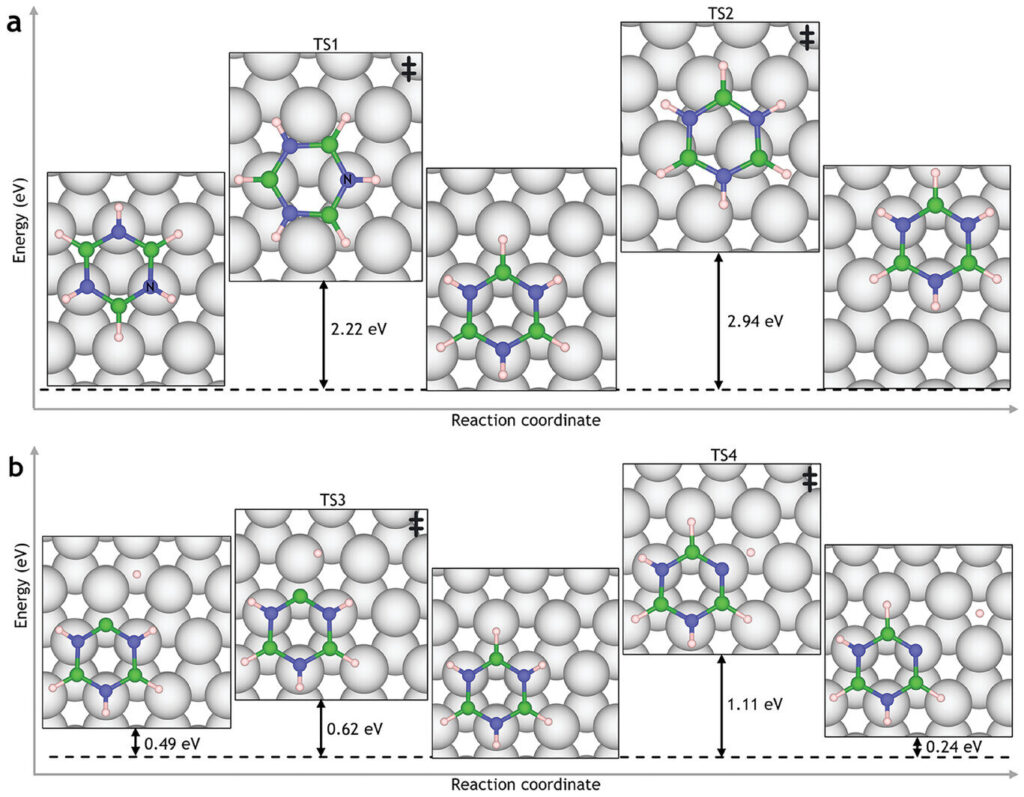A breakthrough in decoding the growth process of hexagonal boron nitride (hBN), a 2D material, and its nanostructures on metal substrates could pave the way for more efficient electronics, cleaner energy solutions and greener chemical manufacturing, according to new research from the University of Surrey published in the journal Small.
Only one atom thick, hBN—often nicknamed “white graphene”—is an ultra-thin, super-resilient material that blocks electrical currents, withstands extreme temperatures and resists chemical damage. Its unique versatility makes it an invaluable component in advanced electronics, where it can protect delicate microchips and enable the development of faster, more efficient transistors.
Going a step further, researchers have also demonstrated the formation of nanoporous hBN, a novel material with structured voids that allows for selective absorption, advanced catalysis and enhanced functionality, vastly expanding its potential environmental applications. This includes sensing and filtering pollutants—as well as enhancing advanced energy systems, including hydrogen storage and electrochemical catalysts for fuel cells.
Dr. Marco Sacchi, lead author of the study and Associate Professor at Surrey’s School of Chemistry and Chemical Engineering, said, “Our research sheds light on the atomic-scale processes that govern the formation of this remarkable material and its nanostructures. By understanding these mechanisms, we can engineer materials with unprecedented precision, optimizing their properties for a host of revolutionary technologies.”
Working in collaboration with Austria’s Graz University of Technology (TU Graz), the team—led by Dr. Marco Sacchi, with the theoretical work performed by Dr. Anthony Payne and Dr. Neubi Xavier—combined density functional theory and microkinetic modeling to map the growth process of hBN from borazine precursors, examining key molecular processes such as diffusion, decomposition, adsorption and desorption, polymerization, and dehydrogenation.
This approach enabled them to develop an atomic scale model that allows for the material to be grown at any temperature.
The insights from the theoretical simulations align closely with experimental observations by the Graz research group, setting the stage for controlled, high-quality production of hBN with specific designs and functionality.
Dr. Anton Tamtögl, lead researcher on the project at TU Graz, said, “Previous studies have neither considered all these intermediates nor such a large parameter space (temperature and particle density). We believe that it will be useful to guide chemical vapor deposition growth of hBN on other metallic substrates, as well as the synthesis of nanoporous or functionalized structures.”


